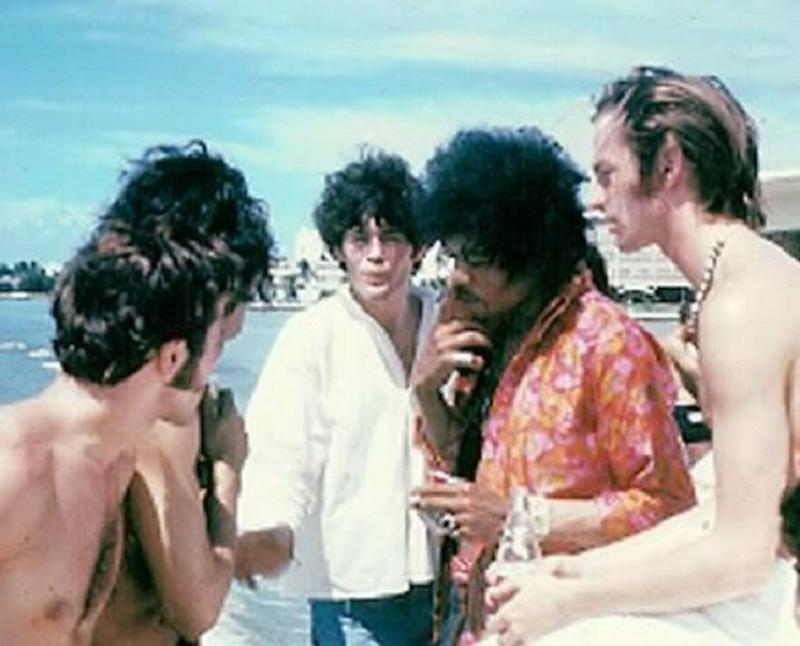When Jimi Hendrix Opened For The Monkees
By | August 4, 2022

When Mickey Dolenz visited New York in the spring of 1967, he headed to Greenwich Village to listen to a musician on the advice of a friend. After he saw Jimmy James and the Blue Flames, he was impressed, but he couldn’t remember the name of the man who had played guitar with his teeth. He learned Hendrix's name pretty quickly as he saw the Jimi Hendrix Experience perform at the Monterey Pop Festival several months later. This was just before the Monkees were about to depart for their U.S. tour, and they needed an opening act.
The Monkees Were Excited About It
Mike Nesmith had been introduced to Hendrix’s music prior to the tour as well. He was at dinner with friends, and they ended up listening to a recording of “Hey Joe.” Nesmith and his friends were all impressed, and once the song was done someone asked “How could anybody be that good?” Later that night, when Dolenz ran into Nesmith, Dolenz told him that he had asked Hendrix to be the opening act. Nesmith did think that this was a strange combination for the tour, but both he and Peter Tork supported the decision since they were both trying to be seen as serious musicians. Hendrix’s presence would not only give them both some credibility but Nesmith was also excited to see Hendrix perform in person every night.

Hendrix Was Not So Enthusiastic
Hendrix was not quite so enthusiastic since he didn’t think very highly of the Monkees’ music. In fact, as he told Melody Maker, “Oh God, I hate them!” and he called their music “dishwater.” His protest was not about the band but about their music though, and his manager saw this as a good opportunity for Hendrix. Although he had three hits in England, he was pretty much an unknown in America. He had just made the appearance at Monterey and was getting some publicity from that, so his manager wanted to capitalize on that by arranging the tour with one of the biggest bands in the U.S. at the time.
The Audience Was A Bit Of A Problem
The tour began in July 1967 in Jacksonville, Florida. Hendrix did not tone his style down for the shows, wearing his colorful, psychedelic clothing. His music was definitely different from what the Monkees’ audience expected since the clean-cut musicians had originated as part of a television show, and Hendrix, on the other hand, had to find his way into music following a challenging path, with a start as a session musician and then playing the club circuit. As Dolenz recalled of the concerts, “Jimi would amble out onto stage, fire up the amps and break out into ‘Purple Haze’ and the kids in the audience would instantly drown him out with ‘We want Daaavy!’” They didn’t even show him any respect when he launched into one of his best-known songs, “Foxy Lady.”

Jimi's Final Show
Hendrix stuck it out for seven shows, and on July 16, 1967, he allegedly flipped the Forest Hills, Queens, New York audience off before throwing down his guitar and leaving the stage. After that seventh show, Hendrix asked to be released. Lillian Roxon, a music critic who was traveling with the tour, issued a press release with a facetious excuse to cover up the truth. Roxon claimed that the Daughters of the American Revolution complained that Hendrix’s music was “corrupting the morals of America’s youth” because it was “too erotic.” This may have been facetious, but the press took it as fact.
Jimi Found Success After The Tour
Though the tour did not last, Nesmith’s friendship with Hendrix did, mainly because Nesmith was so impressed by Hendrix’s sound. As he said, nothing that Hendrix recorded could approach what Nesmith heard him play during the soundcheck, as “No kind of recording could contain it.” When the Monkees continued their tour without him, they did play a snippet of “Purple Haze” nightly as a tribute. Hendrix’s stint with the Monkees may not have lasted long, but it did seem to benefit him, as his debut album was released the month following his departure, and it peaked at No. 5 on the Billboard 200, selling five million copies.
